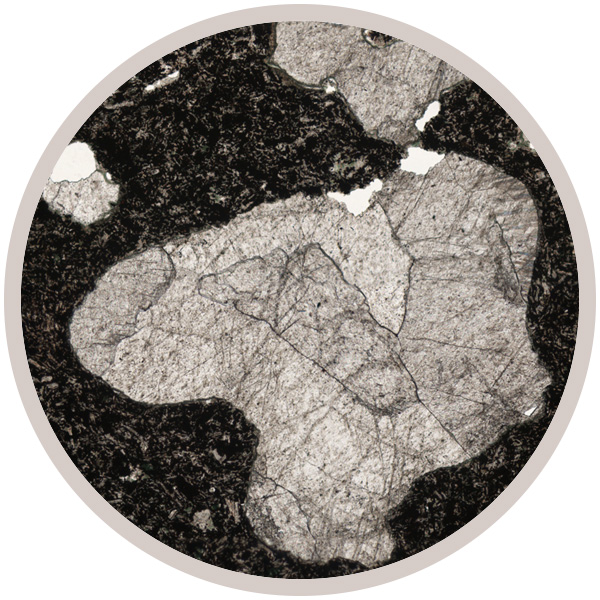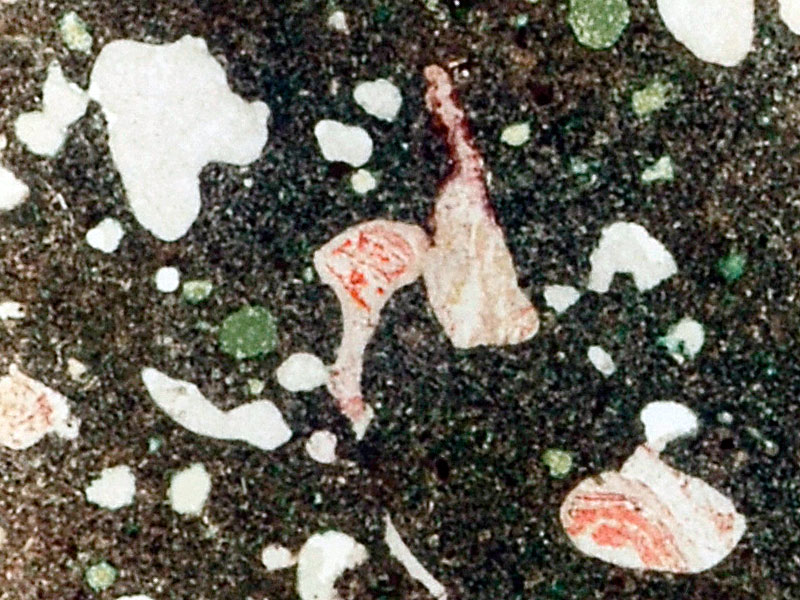
Fact sheet
This fine-grained altered basalt is from Papa Stour, a remote island to the west of the Shetland Islands. The island is formed almost entirely of volcanic rocks erupted during the Devonian period. The sample was collected by the Scottish mineralogist Matthew Forster Heddle (1828—1897). Heddle, who was born on the Orkney Islands, wrote the first comprehensive 'Mineralogy of Scotland', although it wasn't published until after his death.
The rock sample contains altered plagioclase laths in a matrix of altered pyroxene, glass and opaque minerals, often altered to clays. The rock degassed as it erupted, and solidified rapidly to leave holes where the bubbles once were. Hot fluids passing through the rock deposited first a thin green layer of zeolite (pumpellyite), and then subsequently filled with large carbonate crystals, probably calcite.
The United Kingdom Virtual Microscope (UKVM) collection consists of igneous, sedimentary and metamorphic rocks from around the UK.
It is intended as a teaching resource, helping to tell the story of the common rock types and how they form, and reflecting the history of the UK at the margins of the continent of Europe. The collection is a series of teaching sets, for example igneous rocks from the North Atlantic Igneous Province and SW England; high-temperature metamorphic rocks from Scotland and low-temperature metamorphic rocks from Wales; and sedimentary rocks, including English limestones and sandstones.






